I seriously doubt the J-35 has lower range than the F-35. The F-35 has too many curves that were most likely added due to mission creep, thick wings and thick tail stabilizers, lift fan and its doors, thrust vectoring nozzle, roll control ducts, and even a built in ladder. The J-35 appears to be very streamlined and its wings and stabilizers look like they have very high fineness ratios. Overall, its fair to say the J-35 fixes the F-35 errors.Looks slim, silky smooth and sexy compared to the fat belly F-35. With 2 engines and a slimmer profile, J-35 will likely be more manuverable and better Power to weight ratio, thus a better dog fighter.
On the flip size, J-35 probably has less range compared to the F-35 just due to less volume compared to the fat F-35. As Anti-ship missiles become more and more formidable, carrier will have to fight from longer ranges in order to avoid anti-ship missiles. So, small range could become a weakness for the J-35.
Also, what is the armament potential of the J-35? It doesn't have side bays, so how will it carry short range missiles? Does it also lack a gun like the J-20?
You are using an out of date browser. It may not display this or other websites correctly.
You should upgrade or use an alternative browser.
You should upgrade or use an alternative browser.
J-35 carrier fighter (PLAN) thread
- Thread starter Deino
- Start date
F-35C, the carrier version has much larger wings and no lift fan. Its fuel capacity is very large compared to even F-18. So, I don't think J-35 can match that level of fuel capacity. Plus, with 1 engine, F-35 will probably be more fuel efficient and better range with the same fuel load.I seriously doubt the J-35 has lower range than the F-35. The F-35 has too many curves that were most likely added due to mission creep, thick wings and thick tail stabilizers, lift fan and its doors, thrust vectoring nozzle, roll control ducts, and even a built in ladder. The J-35 appears to be very streamlined and its wings and stabilizers look like they have very high fineness ratios. Overall, its fair to say the J-35 fixes the F-35 errors.
It loses some weight and gains more space for fuel and other equipment, but the drag issue gets even worse with larger wings and larger stabilizers. I think I read somewhere the combat radius of the F-35C is the same as the F-35A.F-35C, the carrier version has much larger wings and no lift fan. Its fuel capacity is very large compared to even F-18. So, I don't think J-35 can match that level of fuel capacity. Plus, with 1 engine, F-35 will probably be more fuel efficient and better range with the same fuel load.
Wrong. Less volume may leads to lower fuel load, but also leads to lower drag when the fuselage has equal aerodynamic efficiency. Lower drag leads to lower thrusts needed which leads to lower fuel consumption.On the flip size, J-35 probably has less range compared to the F-35 just due to less volume compared to the fat F-35. As Anti-ship missiles become more and more formidable, carrier will have to fight from longer ranges in order to avoid anti-ship missiles.
It is like, a small family car can easity out-range a large pickup truck.
That is a chain of unfounded conclusions.So, small range could become a weakness for the J-35.
Wrong again, efficiency has nothing to do with size or number of engine. It is a mathemetical principle not even specific to aircraft.Plus, with 1 engine, F-35 will probably be more fuel efficient and better range with the same fuel load.
In general, there are two basic types of mathemetic models involving multiple units in a system, first is like 95% + 95% = 95% and second is like 95% * 95% = 90%. The matter of number engines on an aircraft is the first model.
F-35 having a larger fan gives a higher efficiency in thrust/fuel, but causes a higher drag by increasing the cross section of the aircraft which increases drag. Range is determined by drag/fuel, not thrust/fuel.
Last edited:
I am impressed with the level (so it seems from the photos, to be confirmed) of RAM surface finish. It looks like we are implementing the same model used by the Su-57 and that is a few, focused essential openings, very few rivets, and probably (Su-57) outer frame parts dipped in bath and not sprayed. Practical and efficient.
I am impressed with the level (so it seems from the photos, to be confirmed) of RAM surface finish. It looks like we are implementing the same model used by the Su-57 and that is a few, focused essential openings, very few rivets, and probably (Su-57) outer frame parts dipped in bath and not sprayed. Practical and efficient.
Really, please don't take this as an offence, but you really try to deduct anything meaningful from this blurry image and even more you dare to make a comparison to the Su-57???
Really? I’m not sure what you smoked but you should definitely no longer consume it.
Last edited:
So after the small discussion with @tamsen_ikard , I took a deeper look into the dimensions of the J-35 based on some images I was able to find online. I landed on some pretty interesting and unexpected findings. (Assumed length of J-35 is 17.3m).
1. The Fuselage lengths (Radome to tip of nozzle) of the J-35 and F-22, have about 40cm difference give or take a few cm.
2. The J-35 wing sweep angle is higher than the F-35C, and is almost identical to that of the F-22. It even has a similar leading edge.
3. The J-35 wings are tiny at about 54m^2 wing area and the span around 11.8-12m.
4. The F-35A and B have a leading edge, but the C does not. Not sure what to make of that.
5. The weapon bays of the F-35 and J-35 are almost identical in length and are both larger than the F-22 weapon bay.
6. The J-35 stabilizer surface area is about 1m smaller than the F-35C.
7. The aspect ratio of the J-35 is is smaller than the F-35C, but larger than the F-22.
The high sweep angle and small wing span of the J-35, coupled with its highly streamlined body, may very well mean that it can go much faster than the estimates I was able to find. If the WS-19 ends up being as powerful as the F119, the J-35 will turn out to be an absolute beast.
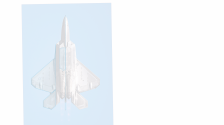
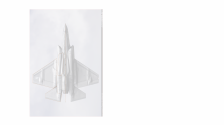
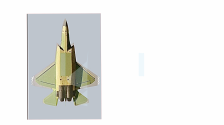

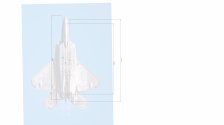
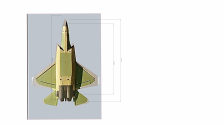
1. The Fuselage lengths (Radome to tip of nozzle) of the J-35 and F-22, have about 40cm difference give or take a few cm.
2. The J-35 wing sweep angle is higher than the F-35C, and is almost identical to that of the F-22. It even has a similar leading edge.
3. The J-35 wings are tiny at about 54m^2 wing area and the span around 11.8-12m.
4. The F-35A and B have a leading edge, but the C does not. Not sure what to make of that.
5. The weapon bays of the F-35 and J-35 are almost identical in length and are both larger than the F-22 weapon bay.
6. The J-35 stabilizer surface area is about 1m smaller than the F-35C.
7. The aspect ratio of the J-35 is is smaller than the F-35C, but larger than the F-22.
The high sweep angle and small wing span of the J-35, coupled with its highly streamlined body, may very well mean that it can go much faster than the estimates I was able to find. If the WS-19 ends up being as powerful as the F119, the J-35 will turn out to be an absolute beast.






Last edited by a moderator:
lcloo
Major
The images that you shown are FC-31 prototype. J35 being designed for carrier operation, is expected to have larger wing area and larger flaps.So after the small discussion with @tamsen_ikard , I took a deeper look into the dimensions of the J-35 based on some images I was able to find online. I landed on some pretty interesting and unexpected findings. (Assumed length of J-35 is 17.3m).
1. The Fuselage lengths (Radome to tip of nozzle) of the J-35 and F-22, have about 40cm difference give or take a few cm.
2. The J-35 wing sweep angle is higher than the F-35C, and is almost identical to that of the F-22. It even has a similar leading edge.
3. The J-35 wings are tiny at about 54m^2 wing area and the span around 11.8-12m.
4. The F-35A and B have a leading edge, but the C does not. Not sure what to make of that.
5. The weapon bays of the F-35 and J-35 are almost identical in length and are both larger than the F-22 weapon bay.
6. The J-35 stabilizer surface area is about 1m smaller than the F-35C.
7. The aspect ratio of the J-35 is is smaller than the F-35C, but larger than the F-22.
The high sweep angle and small wing span of the J-35, coupled with its highly streamlined body, may very well mean that it can go much faster than the estimates I was able to find. If the WS-19 ends up being as powerful as the F119, the J-35 will turn out to be an absolute beast.
Damn it you are right1 The PLA is so stingy they got me scouring the web to find some good photo. guess I'll just wait for photos then I'll try again.The images that you shown are FC-31 prototype. J35 being designed for carrier operation, is expected to have larger wing area and larger flaps.
